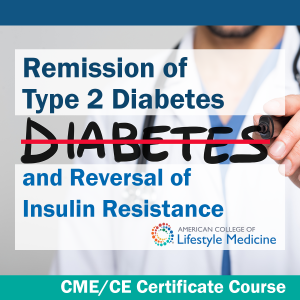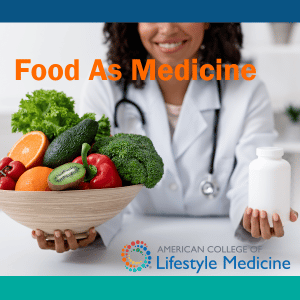What Every Lifestyle Medicine Provider Must Add to Their Root-Cause Focus
By Columbus Batiste, MD, FACC, FSCAI
“But knowing is not enough, we must apply what we learn into the development of lifestyle behavior change treatment plans.”
– Columbus Batiste, MD, FACC, FSCAI

In 1899, just 34 years after slavery ended, W.E.B. DuBois wrote “…one thing, we must of course expect to find, and that is a much higher death rate at present among Negroes than whites.”– “Philadelphia Negro” chapter X page 148.
The unfortunate truth is that 124 years later, African Americans still suffer with a much higher death rate compared to non-Hispanic whites. African Americans are diagnosed with cardiovascular disease six years earlier and are two times more likely to develop high blood pressure than non-Hispanic whites. Not surprisingly, African Americans demonstrate an earlier onset of heart failure and a higher risk of death as a result.
In fact, in 2018, African Americans were found 30% more likely to die from heart disease than non-Hispanic whites. Yes, 124 years after the “Philadelphia Negro” was published, African Americans are still living sicker and dying sooner than other racial groups.
Because we know that health disparities are connected to social issues – i.e., social determinants or drivers of health – every healthcare professional must put into play a new patient intake and history lens if we are to help remedy these differences. Clinicians can no longer limit care to prescriptions and procedures without considering the circumstances in which our patients live, work, play, and pray. We can no longer preach healthful eating and increased activity without considering the financial and neighborhood environments where our patients live.
The health of our communities depends on each of us being more like a social activist – looking beyond lifestyle as the root cause of disease and looking at the environment which enflamed the unhealthy lifestyle habits in the first place and making sure your patient can be successful in their environment.
ZIP Code Matters
Why do African Americans live sicker and die sooner? In the same chapter of “Philadelphia Negro,” W.E.B. DuBois gave the answer “…to assume that in discussing the inhabitants of Philadelphia, one is discussing people living under the same conditions of life is to assume what is not true.” Nearly a century and one quarter later, public health experts have described the fact that where African Americans live, work, play, pray, and eat are vastly different conditions compared to other racial groups.
A study from the think tank Brookings found that generational poverty is over 16 times higher among African American adults than white adults. Poverty occurs when an individual or family lacks the resources to provide life necessities, such as clean water, shelter, and clothing. It also includes a lack of access to such resources as health care, education, and transportation. Another consequence of poverty is access to affordable or good-quality fresh food, also known as food deserts. Food deserts disproportionately exist in communities of color. According to a survey done in 2016 by McKinsey & Company, “one out of every five African American households is situated in a food desert, with few grocery stores, restaurants, or farmers markets.”
Food Matters
Low‐income areas and communities with a high proportion of racial minorities also have a greater density of fast-food outlets and convenience stores with meager healthy food options. Researchers have revealed that for every 1% increase in the percentage of the white population, there was a 17% decrease in the density of fast-food outlets in low‐income neighborhoods. Foods sold in convenience stores and fast-food establishments have been linked to disease and offer insight into a possible cause of disparities.
One study reported that “Dietary risks accounted for 529,299 deaths in 2016, with 83.9% of these deaths due to cardiovascular diseases.” A 16-year health study found the risk of dying from heart disease was 20% higher for participants who ate fast food once a week than participants who did not eat fast food. That number rose to 80% for participants who ate fast food four or more times a week. The study also found that for every additional fast-food outlet, there were four additional heart attacks per 100,000 people each year.
Amidst the appalling statistics, there is a “rose in the concrete.” The relationship between poverty and health has been long recognized by many civil rights activists like Shirley Chisolm, who played an instrumental role in establishing a federal nutrition program providing pregnant women, new mothers, and their infants access to healthy, nutritious foods. Fannie Lou Hamer stated, “If you give a hungry man food, he will eat it; if you give him land, he will grow his own food.” Her personal experiences facing food insecurity and her strong desire to create economic opportunities for Black communities eventually led her to establishing the Freedom Farm Cooperative in 1969. The program was dedicated to grassroots participation and providing Black households economic opportunity and sustainable access to healthy, locally grown foods.
Research from the REGARDS study has demonstrated the power of plant-based foods. Eating more plant rich foods compared to a southern dietary pattern, characterized by added fats, fried food, eggs, organ and processed meats, and sugar-sweetened beverages, is associated with lower rates of acute heart disease, stroke, and heart failure. In the prospective Million Veterans Program study, researchers identified that adherence to a healthy plant-based diet was associated with a lower burden of cancer, diabetes, heart disease and that these beneficial effects extended to both African Americans and non-Hispanic whites, eliminating disparities. In a five-week, non-dairy vegetarian nutrition intervention study in an at-risk African American population, authors concluded, “If widely adopted, this could dramatically reduce and possibly eradicate the racial disparity in ASCVD events and mortality, if 19% of the 21% increase is eliminated by this lifestyle change.”
Knowledge and Application Matter
“…When you know better you do better.” We all must seek knowledge to understand why disparities exist rather than accepting that they are just a way of life. The first step is to ask and listen to your patients about their individual situations that drive their health. There are several tools available to assist assessment of SDoH as well as to locate local resources.
But knowing is not enough, we must apply what we learn into the development of lifestyle behavior change treatment plans. For example, start by joining ACLM’s Health Equity Achieved through Lifestyle Medicine (HEAL Initiative) to learn more and use its resources to make a change. Consider attending the inaugural Health Equity Lifestyle Project Conference, April 2-4, 2023 in Huntsville, AL.
Together we can make a real difference for our patients. As we observe February’s dual Heart Health and Black History months, let’s take action to change the reality DuBois chronicled.









